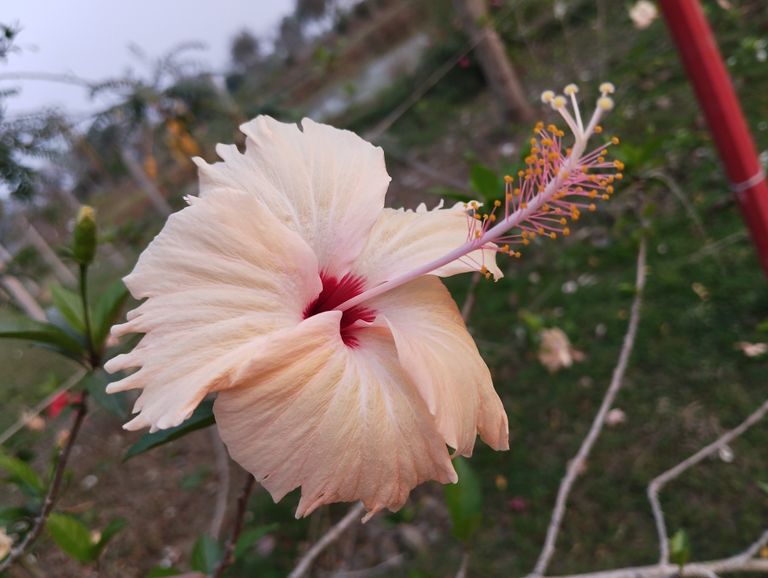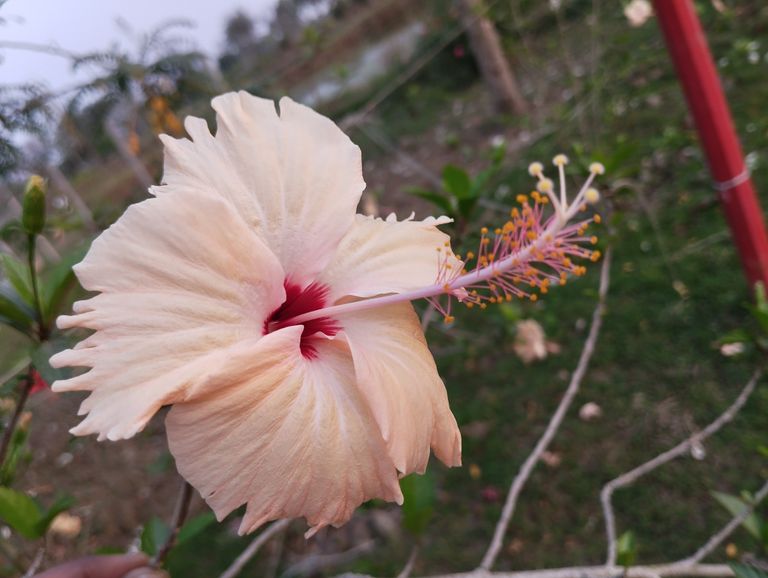
Hibiscus Tea Benefits A Natural Elixir for Health.
Hibiscus tea, made from the dried petals of the Hibiscus sabdariffa flower, is a vibrant, ruby-red herbal infusion with a tart, cranberry-like flavor. This caffeine-free tea is enjoyed worldwide for its refreshing taste and numerous health benefits. From promoting heart health to aiding in weight management, hibiscus tea is a powerhouse of antioxidants and essential nutrients. In this blog, we will explore the various benefits of hibiscus tea and why you should consider incorporating it into your daily routine.
- Rich in Antioxidants
Hibiscus tea is loaded with antioxidants such as flavonoids and anthocyanins, which help combat oxidative stress and reduce free radical damage. These compounds play a crucial role in preventing premature aging, improving skin health, and lowering the risk of chronic diseases. Drinking hibiscus tea regularly can help detoxify the body and support overall well-being.
- Supports Heart Health
One of the most well-known benefits of hibiscus tea is its positive impact on cardiovascular health. Studies suggest that hibiscus tea helps lower blood pressure and cholesterol levels, reducing the risk of heart disease. It acts as a natural diuretic, helping to eliminate excess sodium from the body, which is essential for maintaining a healthy blood pressure level.
How Hibiscus Tea Benefits the Heart
Lowers LDL (bad) cholesterol
Increases HDL (good) cholesterol
Reduces inflammation in blood vessels
Helps regulate blood pressure naturally
- Aids in Weight Loss
For those looking to manage their weight, hibiscus tea can be a great addition to their diet. It contains compounds that inhibit the production of amylase, an enzyme responsible for breaking down carbohydrates into sugar. This means that hibiscus tea may help reduce fat accumulation and support weight loss when combined with a healthy diet and exercise.
Weight Loss Benefits of Hibiscus Tea
Boosts metabolism
Reduces fat accumulation
Helps control appetite
Supports digestion
- Improves Liver Health
The liver plays a crucial role in detoxifying the body, and hibiscus tea supports liver function by enhancing its ability to eliminate toxins. Studies have shown that hibiscus extract may help reduce liver fat accumulation and improve liver enzymes, promoting better liver health.
How Hibiscus Tea Supports the Liver
Enhances detoxification processes
Reduces fatty liver symptoms
Protects against liver damage
- Helps Manage Blood Sugar Levels
Hibiscus tea has been studied for its potential to regulate blood sugar levels, making it beneficial for people with diabetes or those at risk of developing the condition. The polyphenols and flavonoids in hibiscus tea help improve insulin sensitivity and reduce glucose absorption, contributing to better blood sugar control.
Benefits for Blood Sugar Management
Lowers blood glucose levels
Improves insulin sensitivity
Reduces the risk of type 2 diabetes
- Boosts Immunity
Hibiscus tea is packed with vitamin C and powerful antioxidants that strengthen the immune system. Regular consumption can help the body fight infections, reduce inflammation, and speed up recovery from illnesses like the common cold and flu.
How Hibiscus Tea Boosts Immunity
High in vitamin C for immune support
Contains antibacterial and antiviral properties
Helps reduce inflammation
- Enhances Digestive Health
If you suffer from digestive issues, hibiscus tea can be a natural remedy to soothe the stomach and promote healthy digestion. It acts as a mild laxative, helping to prevent constipation and improve bowel movements. The anti-inflammatory properties of hibiscus also aid in reducing bloating and discomfort.
Digestive Benefits of Hibiscus Tea
Relieves constipation
Reduces bloating and gas
Supports gut health
- Promotes Healthy Skin and Hair
The antioxidants and vitamins in hibiscus tea contribute to glowing skin and strong hair. It helps fight skin aging by reducing wrinkles and fine lines, while its antibacterial properties prevent acne and skin infections. When used as a hair rinse, hibiscus tea strengthens hair roots and prevents dandruff.
Skin & Hair Benefits
Reduces signs of aging
Improves skin hydration
Strengthens hair follicles
Fights dandruff and scalp infections
- Reduces Stress and Anxiety
Hibiscus tea has natural calming properties that help reduce stress and anxiety. It contains flavonoids that promote relaxation by lowering cortisol levels, the stress hormone. Drinking a warm cup of hibiscus tea before bedtime can aid in better sleep and relaxation.
How Hibiscus Tea Helps with Stress
Acts as a natural antidepressant
Lowers cortisol levels
Promotes relaxation and better sleep
- Supports Kidney Health
Since hibiscus tea acts as a natural diuretic, it helps flush out toxins from the kidneys and prevents kidney stone formation. It promotes urinary health by reducing the buildup of minerals and salts that can lead to kidney issues.
Kidney Health Benefits
Prevents kidney stones
Flushes out toxins
Reduces the risk of urinary tract infections (UTIs)
How to Make Hibiscus Tea
Making hibiscus tea at home is simple and requires just a few ingredients.
Ingredients:
1 cup of dried hibiscus petals
4 cups of water
Honey or lemon (optional)
Instructions:
- Boil water and add dried hibiscus petals.
- Let it steep for 5-10 minutes.
- Strain and pour into a cup.
- Add honey or lemon for flavor if desired.
- Enjoy hot or cold!
Precautions and Side Effects
While hibiscus tea offers numerous health benefits, it’s important to consume it in moderation.
May lower blood pressure too much – Those on medication for hypertension should consult their doctor.
Can interfere with medications – Especially for blood pressure and diabetes.
Pregnant and breastfeeding women should consult a doctor before consuming hibiscus tea.
Final Thoughts
Hibiscus tea is a delicious and health-boosting herbal beverage that offers a range of benefits, from heart health to glowing skin. Whether you enjoy it hot or iced, this vibrant red tea can be a refreshing and nutritious addition to your daily routine. Try incorporating hibiscus tea into your lifestyle and experience its incredible effects on your health and well-being. Have you tried hibiscus tea? Share your experience in the comments.
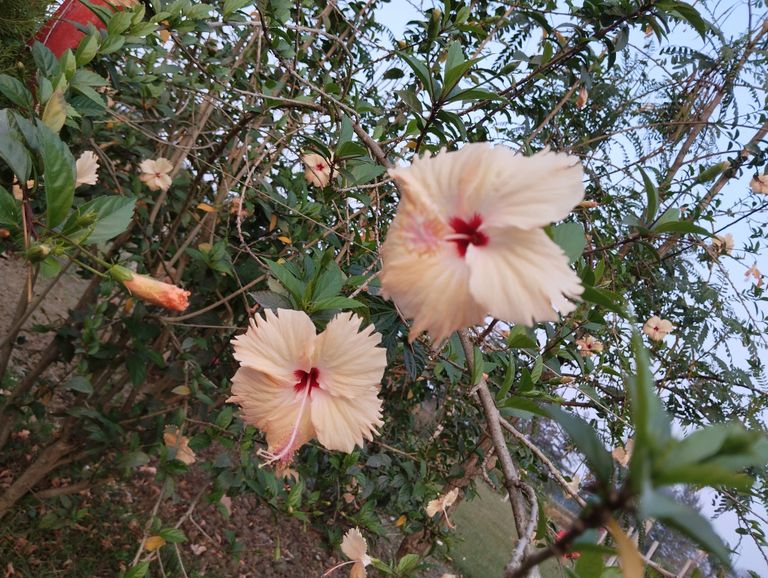
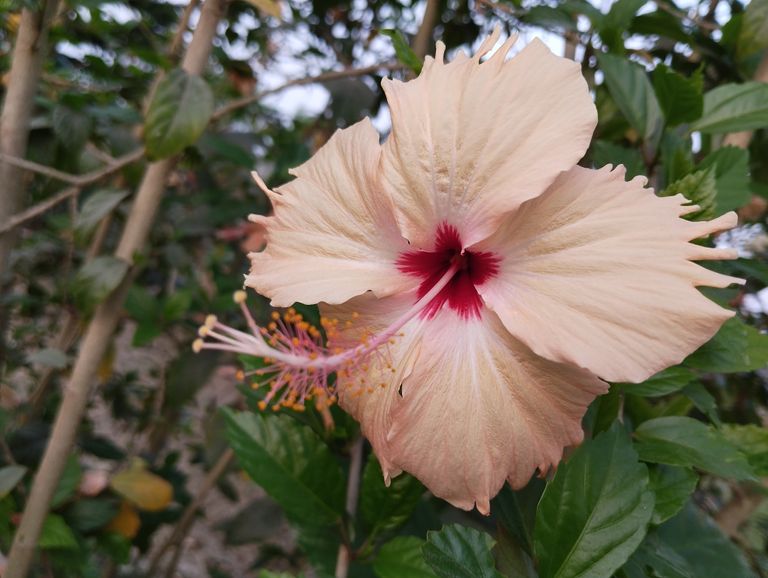
The Beauty of Hibiscus Flower Photography
Nature is full of breathtaking sights, but few flowers captivate photographers and nature lovers like the hibiscus. Known for its vibrant colors, delicate petals, and striking presence, the hibiscus is a favorite subject for photographers worldwide. In this blog, we will explore the beauty of hibiscus flower photography, techniques to capture stunning shots, and how to enhance your images for a mesmerizing effect.
Why Hibiscus Flowers Are Perfect for Photography
Hibiscus flowers, also known as "Rosa Sinensis," belong to the Malvaceae family and are admired for their exotic appearance. Their broad petals, intricate stamen structure, and wide range of colors make them an ideal subject for close-up and macro photography.
- Vibrant Colors and Textures
Hibiscus flowers bloom in a variety of colors, including red, pink, yellow, orange, and white. The deep, rich hues of their petals contrast beautifully with the green foliage, making them visually striking in photographs. The velvety texture of the petals adds a soft, delicate charm to images.
- Unique Shape and Details
One of the most fascinating aspects of hibiscus flowers is their long, protruding stamen topped with pollen-laden anthers. This distinct feature creates an excellent focal point for macro photography, drawing attention to the flower’s reproductive structures.
- Versatile Backgrounds
Hibiscus flowers can be found in tropical gardens, along roadsides, and even in home gardens, allowing photographers to experiment with different backgrounds. Whether placed against a bright blue sky, lush green leaves, or soft blurred surroundings, the hibiscus stands out beautifully.
Best Photography Techniques for Hibiscus Flowers
Capturing the true essence of a hibiscus flower requires a combination of the right settings, lighting, and composition techniques. Here are some expert tips:
- Use Natural Light for a Soft Glow
Hibiscus flowers look best when photographed in natural light. Early morning and late afternoon provide soft, diffused sunlight that enhances the flower’s natural colors without harsh shadows. Overcast days are also excellent for flower photography, as the clouds act as a natural light diffuser.
- Macro Photography for Stunning Details
If you want to highlight the intricate details of a hibiscus flower, use a macro lens. A lens with a focal length of 60mm to 100mm is ideal for capturing close-up shots while maintaining a beautiful background blur (bokeh).
Settings for Macro Shots:
Aperture: Use a wide aperture (f/2.8 to f/5.6) to create a shallow depth of field, isolating the flower from the background.
Shutter Speed: Keep it fast (1/250s or higher) to avoid blur caused by wind movement.
ISO: Keep it low (ISO 100-400) to maintain image clarity.
- Experiment with Angles
Instead of taking a straight-on shot, try different angles:
Side angles highlight the curve of the petals.
Top-down shots showcase the radial symmetry of the flower.
Close-ups of the stamen add a dramatic touch.
- Use a Reflector or Fill Light
If your hibiscus is in a shaded area, a white reflector can bounce natural light back onto the flower, reducing harsh shadows. Alternatively, a small LED light can help highlight the details without altering the natural look.
- Capture Water Droplets for Extra Beauty
Morning dew or water droplets on the petals add a refreshing and artistic touch to hibiscus photography. You can spray a little water on the petals before taking your shot to enhance this effect.
Editing and Enhancing Hibiscus Photos
Post-processing plays a crucial role in bringing out the best in your hibiscus photos. Here are some simple yet effective editing techniques:
- Adjust Brightness and Contrast
Increase brightness slightly to make the colors pop while enhancing contrast to define the edges of the petals.
- Boost Saturation and Vibrance
Hibiscus flowers have naturally rich colors, but a slight increase in saturation and vibrance can make them even more striking. Be careful not to overdo it, as it may make the image look unnatural.
- Sharpen Details
Use sharpening tools to enhance the fine details of the petals and stamen. This works best for macro shots where textures matter.
- Blur the Background (If Needed)
If your background is distracting, use selective blurring tools to create a creamy, dreamy effect that keeps the focus on the flower.
- Crop for a Better Composition
Sometimes, cropping out unnecessary elements can make the flower stand out better. Use the rule of thirds for a more balanced composition.
Creative Ideas for Hibiscus Photography
- Monochrome Hibiscus Shots
Converting a hibiscus photo to black and white can highlight its intricate textures and patterns, creating a dramatic and artistic effect.
- Double Exposure with Nature Elements
Blend hibiscus images with elements like leaves, butterflies, or water reflections for a surreal, dreamy look.
- Hibiscus with Pollinators
Capture bees, butterflies, or hummingbirds interacting with hibiscus flowers to add a dynamic and storytelling element to your photos.
- Abstract Close-Ups
Zoom in on just a portion of the flower, like the curve of a petal or the details of the stamen, for an abstract and unique perspective.
- Seasonal Hibiscus Photography
Different seasons bring different moods to flower photography. Try capturing hibiscus flowers in the rain, covered in frost (if in a colder region), or bathed in golden sunlight.
Conclusion
Hibiscus flower photography is an enchanting experience, allowing photographers to explore vibrant colors, intricate details, and creative compositions. With the right techniques, lighting, and editing, you can capture stunning images that showcase the beauty of this tropical flower. Whether you are a beginner or an experienced photographer, experimenting with different styles and settings will help you create breathtaking hibiscus photographs.
So grab your camera, find a blooming hibiscus, and start capturing its mesmerizing charm today. Would you like tips on specific hibiscus species or advanced editing techniques? Let me know.
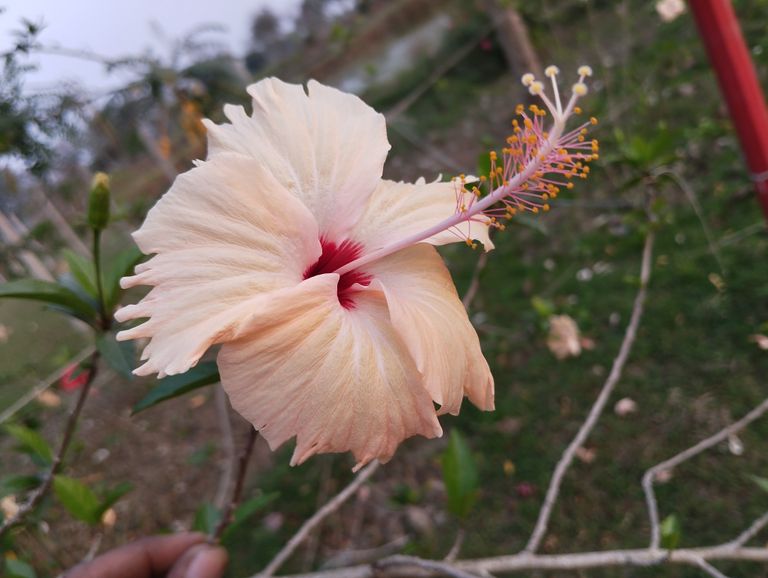
Hibiscus Garden: A Paradise of Vibrant Blooms
The hibiscus flower, known as "জবা ফুল" in Bengali, is a stunning and vibrant addition to any garden. With its wide variety of colors and large, eye-catching petals, a hibiscus garden can be a paradise for flower lovers. Whether you are a gardening enthusiast or just starting, cultivating a hibiscus garden is a rewarding experience. In this blog, we will explore the beauty of hibiscus flowers, their benefits, how to grow them successfully, and tips for maintaining a flourishing hibiscus garden.
The Beauty of Hibiscus Flowers
Hibiscus flowers are renowned for their large, trumpet-shaped blooms and bright colors. They come in various shades, including red, pink, yellow, orange, white, and even purple. The most common type in tropical regions is the red hibiscus, which holds cultural and religious significance in many parts of the world.
Some key characteristics of hibiscus flowers include:
Large, colorful petals: Their vivid hues make them a striking addition to any garden.
Attractive to pollinators: Bees, butterflies, and hummingbirds love hibiscus flowers, making your garden a lively place.
Symbolism: In different cultures, hibiscus symbolizes beauty, love, and positivity.
Benefits of a Hibiscus Garden
A hibiscus garden is not just aesthetically pleasing; it also offers several benefits:
- Health and Medicinal Benefits
Hibiscus has been used in traditional medicine for centuries. Some of its health benefits include:
Hibiscus tea: Made from dried hibiscus petals, it is rich in antioxidants and helps lower blood pressure.
Skin care: Hibiscus is used in herbal skincare products to improve skin elasticity and reduce signs of aging.
Digestive health: Consuming hibiscus tea aids digestion and supports liver health.
- Environmental Benefits
Hibiscus plants help purify the air by absorbing pollutants.
Their vibrant blooms attract bees and butterflies, promoting biodiversity.
They prevent soil erosion when planted along slopes or garden edges.
- Ornamental Value
Hibiscus flowers enhance the beauty of gardens, balconies, and terraces.
They can be grown in pots, hanging baskets, or garden beds.
They make excellent hedges or natural fences for added privacy.
How to Grow a Thriving Hibiscus Garden
Growing hibiscus is easy, whether you plant them in the ground or containers. Here are some essential steps to create a thriving hibiscus garden:
- Choosing the Right Variety
There are different types of hibiscus, including:
Tropical hibiscus: Requires warm temperatures and blooms year-round.
Hardy hibiscus: Can survive colder climates and produces large, showy flowers.
Perennial hibiscus: Grows back every year, providing long-lasting beauty.
- Selecting the Perfect Location
Hibiscus plants thrive in full sunlight, so choose a spot with at least 6–8 hours of sunlight daily.
They prefer well-drained soil rich in organic matter.
If growing in pots, ensure the containers have drainage holes to prevent waterlogging.
- Soil Preparation and Planting
Use loamy or sandy soil with good drainage.
Add compost or organic fertilizer to enrich the soil.
Dig a hole twice the size of the root ball, place the plant, and cover it with soil.
- Watering and Fertilization
Watering: Keep the soil moist but not soggy. Water deeply 2–3 times a week.
Fertilizer: Use a balanced fertilizer (10-10-10) or one high in phosphorus to encourage blooming.
- Pruning and Maintenance
Prune your hibiscus plants in early spring to encourage bushier growth and more blooms.
Remove dead leaves and spent flowers to promote new growth.
Protect plants from pests like aphids and spider mites by using organic insecticides.
Creative Ideas for Hibiscus Gardens
A hibiscus garden can be designed in many creative ways to enhance your outdoor space. Here are some ideas:
- Tropical Paradise Theme
Mix hibiscus with palm trees and ferns for a tropical feel.
Add a small pond or fountain to create a serene atmosphere.
- Hibiscus Hedge or Border
Plant hibiscus along fences or pathways to create a natural hedge.
Use different colored hibiscus varieties for a vibrant effect.
- Container Hibiscus Garden
Grow hibiscus in large decorative pots on balconies or patios.
Use hanging baskets for cascading hibiscus varieties.
- Butterfly and Bee Garden
Combine hibiscus with other pollinator-friendly plants like lavender and sunflowers.
Avoid using chemical pesticides to keep the garden eco-friendly.
Common Problems and Solutions
Even though hibiscus is relatively easy to grow, some common issues may arise:
Conclusion
A hibiscus garden is a beautiful and rewarding addition to any home. With its vibrant blooms, health benefits, and environmental advantages, cultivating hibiscus is both enjoyable and beneficial. By following the right care techniques—proper sunlight, watering, fertilization, and pruning—you can enjoy a stunning garden filled with these breathtaking flowers.
Whether you plant them in your backyard, balcony, or patio, hibiscus flowers will bring a touch of elegance and charm to your space. Start your hibiscus garden today and enjoy nature’s colorful masterpiece.
